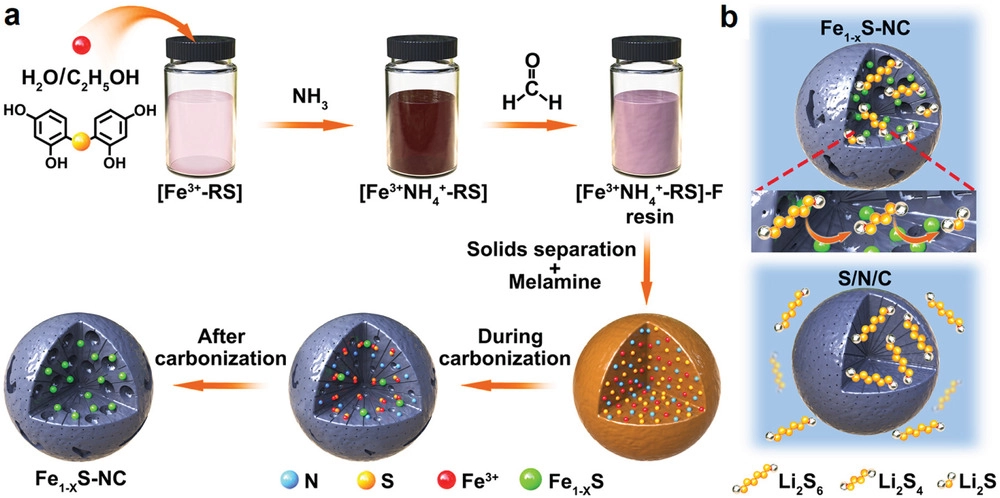Y. Boyjoo, H.D. Shi, E. Olsson, Q. Cai, Z-S Wu*, J. Liu* and G. Qing (M.) Lu
Advanced Energy Materials, 2020, 10, 2000651.
DOI: 10.1002/aenm.202000651 [PDF]

Lithium–sulfur batteries (LSBs) are a class of new‐generation rechargeable high‐energy‐density batteries. However, the persisting issue of lithium polysulfides (LiPs) dissolution and the shuttling effect that impedes the efficiency of LSBs are challenging to resolve. Herein a general synthesis of highly dispersed pyrrhotite Fe1−xS nanoparticles embedded in hierarchically porous nitrogen‐doped carbon spheres (Fe1−xS‐NC) is proposed. Fe1−xS‐NC has a high specific surface area (627 m2g−1), large pore volume (0.41 cm3g−1), and enhanced adsorption and electrocatalytic transition toward LiPs. Furthermore, in situ generated large mesoporous pores within carbon spheres can accommodate high sulfur loading of up to 75%, and sustain volume variations during charge/discharge cycles as well as improve ionic/mass transfer. The exceptional adsorption properties of Fe1−xS‐NC for LiPs are predicted theoretically and confirmed experimentally. Subsequently, the electrocatalytic activity of Fe1−xS‐NC is thoroughly verified. The results confirm Fe1−xS‐NC is a highly efficient nanoreactor for sulfur loading. Consequently, the Fe1−xS‐NC nanoreactor performs extremely well as a cathodic material for LSBs, exhibiting a high initial capacity of 1070 mAh g−1with nearly no capacity loss after 200 cycles at 0.5 C. Furthermore, the resulting LSBs display remarkably enhanced rate capability and cyclability even at a high sulfur loading of 8.14 mg cm−2.